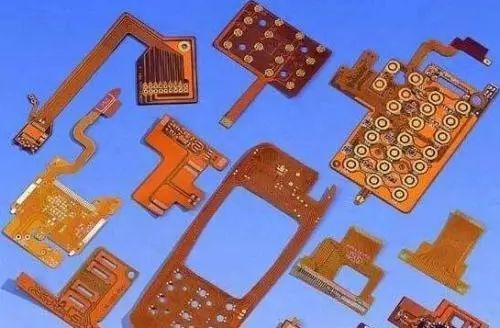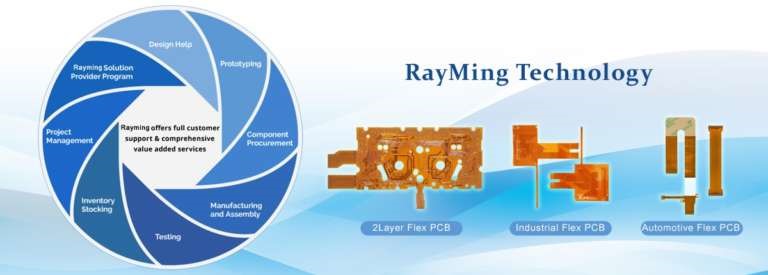Flexible PCB plating
(1) FPC electroplated pre-treated flexible printed board FPC may have adhesive or ink contamination on the surface of the copper conductor exposed by the coating process, and may also have oxidation and discoloration due to high temperature process. Tight coatings with good adhesion must remove contamination and oxide layers from the conductor surface to clean the conductor surface.
However, some of these pollutions are very strong in combination with copper conductors, and they cannot be completely removed with weak cleaning agents. Therefore, most of them are often treated with a certain amount of alkaline abrasive and brushing. The covering adhesives are mostly rings. Oxygen resin and poor alkali resistance, which will lead to a decrease in bonding strength. Although it is not obvious, in the FPC plating process, the plating solution may infiltrate from the edge of the coating layer, and in severe cases, the coating layer may be peeled off. . In the final welding, the phenomenon of soldering the drill to the underside of the cover layer occurs.
It can be said that the pre-treatment cleaning process will have a major impact on the basic characteristics of the flexible printed board, and the processing conditions must be given full attention.
(2) Thickness of FPC plating When plating, the deposition rate of electroplated metal is directly related to the electric field strength. The electric field strength changes with the shape of the line pattern and the positional relationship of the electrodes. According to the coating, the line width of the general wire is more Thinner, the sharper the terminal of the terminal part, the closer the distance to the electrode, the greater the electric field strength, and the thicker the plating of this part.
In the applications related to flexible printed boards, the difference in the width of many wires in the same line is extremely large, which makes it more likely to cause uneven thickness of the plating layer. To prevent this from happening, a shunt cathode pattern can be attached around the line. Absorbs the uneven current distributed on the plating pattern to maximize the uniform thickness of the coating on all parts. Therefore, it is necessary to work on the structure of the electrode. Here, a compromise is proposed, which is strict with respect to the requirements of the uniformity of the thickness uniformity of the coating, and relatively relaxed standards for other parts, such as the lead-plated tin for fusion welding, the gold plating layer for metal wire bonding, etc. High, and for the general anti-corrosion of lead-plated tin, the coating thickness is relatively relaxed.
(3) The smudges and dirt of FPC plating have just been plated, especially the appearance is not a problem, but some surfaces will appear stains, dirt, discoloration, etc., especially after the factory inspection. What is different, but when the user receives the check, I find that there is a problem with the appearance. This is caused by insufficient drift, and a residual plating solution on the surface of the plating layer, which is caused by a slow chemical reaction over a period of time.
In particular, the flexible printed board is not very flat due to its softness, and the recess is prone to “accumulation” of various solutions, and then it will react and discolor at this portion. In order to prevent this from happening, not only sufficient drifting but also full drifting is required. It is also necessary to carry out sufficient drying treatment, and it is possible to confirm whether or not the drifting is sufficient by a high-temperature heat aging test.
Flexible circuit board plating
When the line conductor to be plated is isolated and cannot be used as an electrode, only electroless plating can be performed. Generally, the plating solution used for electroless plating has a strong chemical action, and the electroless gold plating process is a typical example. The electroless gold plating solution is an alkaline aqueous solution having a very high pH. According to the coating online, when using this electroplating process, it is easy to occur under the coating layer of the plating solution, especially if the quality management of the lamination process is not strict and the bonding strength is low, this problem is more likely to occur.
The plating of the displacement reaction is more likely to occur under the coating layer due to the characteristics of the plating solution, and it is difficult to obtain ideal plating conditions by electroplating using this process.
Flexible circuit board hot air leveling
The hot air plain is a technology developed for the coating of lead-tin on rigid printed circuit boards. Because of this technology, it is also applied to flexible printed board FPC. The hot air leveling is to directly immerse the board in the molten lead-slot, and the excess solder is blown off by hot air. This condition is very demanding for the flexible printed board FPC. If the flexible printed board FPC cannot be immersed in the solder without any measures, the flexible printed board FPC must be clamped to the middle of the screen made of titanium steel. Then, it is immersed in the molten solder. Of course, the surface of the flexible printed board FPC is also cleaned and coated with flux.
Due to the hot air leveling process harsh conditions, it is easy for the solder to be drilled from the end of the cover layer to the underside of the cover layer, especially when the adhesive strength of the cover layer and the copper foil surface is low, which is more likely to occur frequently. Since the polyimide film is easy to absorb moisture, when the hot air leveling process is used, the moisture absorbing moisture may cause foaming or even peeling of the cover layer due to rapid heat evaporation, so the coating line is recommended before the FPC hot air leveling. Dry treatment and moisture management.
Want to know more about flexible PCB plating, visit www.raypcb.com




